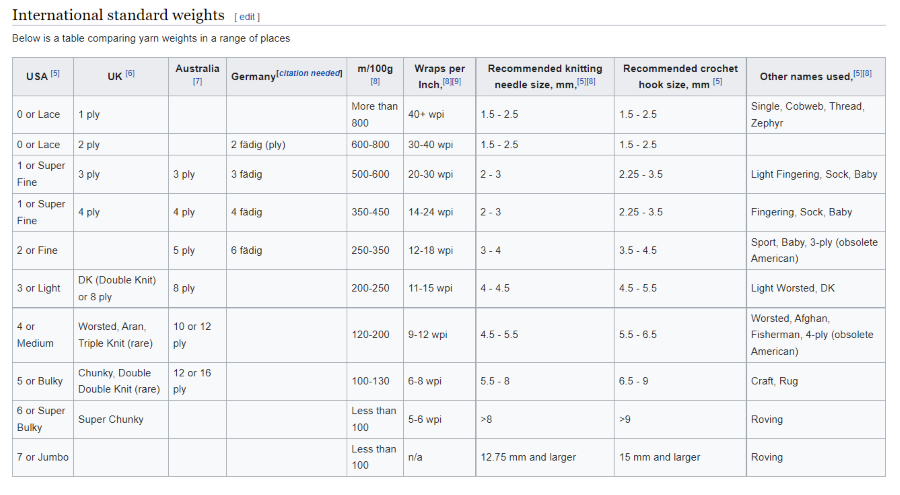Over my years of knitting, how patterns refer to the weight of yarn used in
Over my years of knitting, how patterns refer to the weight of yarn used in patterns has changed. In the fifties, patterns called for weights such as worsted, sport, and fingering. Some countries still refer to a certain number of plies as being worsted or sport weight yarns. More recent patterns have gone by the number of ounces or grams needed for a pattern. None of these methods really address yardage which is what the knitter really needs to know in order to obtain enough yarn for a particular project.
 The Yarn Craft Council has determined a standard weight system for yarns manufactured in the United States. The yarn label will have one of these symbols that denotes needle size as well as roughly many stitches are in a four inch (10 centimeter square). While yardage is not addressed, the stitches per inch can be very helpful in selecting the correct weight of yarn for a pattern.
The Yarn Craft Council has determined a standard weight system for yarns manufactured in the United States. The yarn label will have one of these symbols that denotes needle size as well as roughly many stitches are in a four inch (10 centimeter square). While yardage is not addressed, the stitches per inch can be very helpful in selecting the correct weight of yarn for a pattern. This chart is from Wikipedia showing the range of terms and weight of yarn and how they do very among countries. In addition, it gives a general range of meters in an average 100 gram ball of yarn (Meters are about 10% longer than yards - 100 yards is just over 90 meters, 100 meters is almost 110 yards. One hundred grams is about 3.5 ounces.)
This chart is from Wikipedia showing the range of terms and weight of yarn and how they do very among countries. In addition, it gives a general range of meters in an average 100 gram ball of yarn (Meters are about 10% longer than yards - 100 yards is just over 90 meters, 100 meters is almost 110 yards. One hundred grams is about 3.5 ounces.)Besides plied or twisted yarns, there are many other methods of forming yarns. This article about plied, cabled, and chained yarns is found on Yarnsub.

